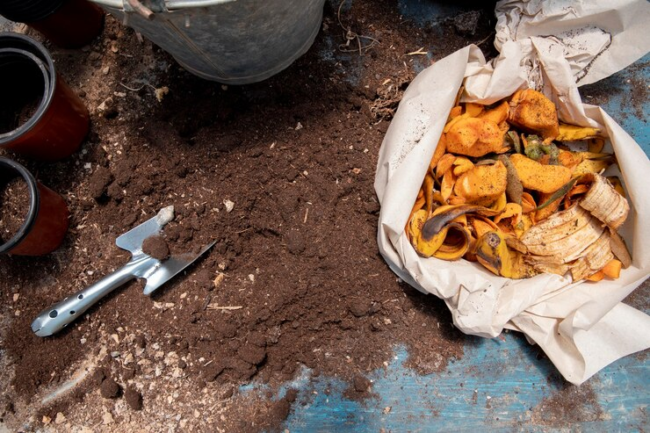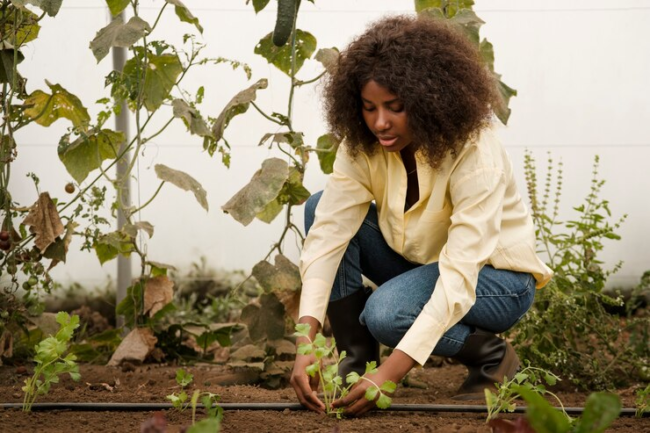
Transforming your home into an eco-friendly haven doesn’t necessarily demand drastic changes; it starts with small, intentional steps that create meaningful, long-term impact. By integrating energy-efficient solutions, sustainable materials, and smarter everyday habits, homeowners can significantly reduce their environmental footprint while enhancing their quality of life.
Below are 10 practical ways to make your home greener.
1. Start Small With Green Gardening
A thriving garden is a perfect introduction to sustainable living, and incorporating bee nucleus colonies can enhance its ecological impact. These small starter colonies, complete with a mated queen, worker bees, and brood in various stages, help pollinate your plants while contributing to the health of local ecosystems.
By including native plants and maintaining a flower-rich garden, you create an environment that supports these colonies’ growth and encourages biodiversity, ensuring your garden thrives sustainably.
2. Harness Renewable Energy
One of the most impactful steps toward creating an eco-friendly home is transitioning to renewable energy sources. Installing solar energy panels allows you to capture and convert sunlight into electricity, significantly reducing your dependence on traditional energy grids.
Designed for durability and efficiency, these panels can withstand harsh weather conditions while providing clean energy for your home. Whether powering your entire house or supplementing specific energy needs, solar energy panels are a sustainable and cost-effective investment for the future.
| Call To Action: By selecting and utilizing the right materials, we can actively contribute to restoring soil health and supporting biodiversity. |
3. Improve Waste Reduction Through Composting

Composting is an essential sustainable practice for managing organic waste while creating nutrient-rich soil for gardening. By utilizing kitchen scraps, yard trimmings, and other biodegradable materials, homeowners can significantly reduce the amount of waste sent to landfills.
This is particularly important as the planet generates approximately 2.01 billion tons of municipal solid waste (MSW) annually, a figure projected to rise by 70% to 3.40 billion tons within the next 30 years.
Composting methods, such as traditional bins, tumblers, or vermicomposting with worms, suit a variety of living spaces, from apartments to large properties. A balanced compost pile featuring “greens” like fruit scraps and “browns” like dried leaves ensures efficient decomposition.
4. Enhance Indoor Air Quality Naturally
Maintaining pure and healthy indoor air is vital for overall well-being, particularly in energy-efficient homes where airflow is often limited.
According to the Environmental Protection Agency (EPA), proper ventilation not only helps dilute emissions from indoor sources but also carries pollutants out of the home, ensuring a cleaner environment. Additionally, good ventilation supports oxygen levels, which generally range from 18% to 20% in typical indoor and outdoor air, promoting a healthier and more balanced indoor atmosphere.
Houseplants, such as snake plants and spider plants, can naturally filter pollutants like benzene and formaldehyde, improving indoor air quality.
Keeping windows open regularly ensures proper ventilation, while dehumidifiers help control excess moisture to prevent mold growth.
Additionally, opting for natural or non-toxic building materials, such as low-VOC paints and finishes, prevents the release of harmful chemicals into the home. Combined, these strategies foster a cleaner and more breathable indoor environment.
| Advice: You can stay safe by monitoring your local air quality forecast and limiting outdoor activities, such as exercising or working, on days with poor air quality. |
5. Encourage Conservation Through Water-Efficient Practices
Water conservation begins with thoughtful upgrades and behavioral changes that minimize unnecessary use. Installing low-flow fixtures, like aerated faucets and dual-flush toilets, drastically reduces household water usage without impacting performance.
Fixing leaks promptly prevents thousands of gallons of water from being wasted each year, with leaks accounting for approximately 12% of indoor water use in homes nationally. Even a small drip from a worn faucet washer can waste up to 75 liters of water daily, highlighting the importance of regular maintenance.
For outdoor spaces, homeowners can rely on rainwater harvesting systems to irrigate gardens or wash cars without drawing from municipal water supplies.
Choosing native plants that require minimal watering also promotes sustainability while maintaining a vibrant and eco-conscious landscape.
6. Embrace Sustainable Flooring Options

Sustainable flooring options offer a blend of durability, beauty, and reduced environmental impact. Cork flooring, harvested without damaging the tree, is a renewable material revered for its natural moisture resistance and cushioned feel underfoot. Reclaimed wood flooring preserves history while reducing deforestation and waste.
Bamboo remains a top choice for its rapid growth and renewability, providing a sturdy alternative to traditional hardwood. By prioritizing these materials, homeowners can create stylish spaces that align with eco-friendly principles.
7. Incorporating Zoning Systems for Temperature Control
Zoning systems divide the home into separate heating or cooling areas, allowing homeowners to control the temperature independently in each zone. This targeted heating and cooling system reduces energy wastage by ensuring that you only use energy in rooms that are occupied.
For example, bedrooms can remain cool during the day, while living areas are heated for comfort. Zoning systems, when paired with smart thermostats, further optimize energy use, increasing efficiency and comfort while lowering utility bills.
8. Repurposing Materials for Creative Home Projects
Instead of discarding old materials, consider repurposing them to create functional or decorative elements in your home. For example, reclaimed wood can be transformed into stylish furniture or shelving, while old glass jars can serve as creative storage containers.
Toby Drury, the ReStore South Manager at Pikes Peak Habitat, highlights the importance of repurposing by saying,
“I would like to see less things going in the landfill and less things produced. I think we really need some changes in our society to be able to come up with a better way of doing things. We’re over-inundated with things. We now over-produce, and half of it goes to waste. I would really like to see more ways to keep more of that from happening.”
By repurposing materials, you give them a second life, reduce the strain on landfills, and contribute to a more sustainable and creative way of living.
9. Expand the Impact of Organic Gardening

Organic gardening is a sustainable practice that enriches soil while eliminating the need for harmful chemicals. Healthy soil can be fostered through composting, which recycles organic waste into valuable nutrients. Planting diverse crops, including nitrogen-fixing cover plants, improves soil fertility while reducing reliance on synthetic fertilizers.
Pest control in organic gardening relies on eco-friendly methods, such as companion planting and introducing beneficial insects, to maintain a balanced ecosystem naturally. These strategies produce vibrant gardens that support biodiversity and yield chemical-free produce for households.
10. Rethinking Daily Habits to Minimize Waste
Lifestyle changes, even small ones, can have a profound impact on reducing household waste.
One effective strategy is to avoid any product labeled as “disposable” and instead opt for reusable alternatives, such as stainless steel water bottles and fabric shopping bags, which help eliminate reliance on single-use plastics.
Minimizing food waste is another key step, achieved through thoughtful meal planning and proper storage of perishables to reduce discarded items.
Additionally, supporting local markets and stores that prioritize minimal or recyclable packaging helps address shipping and packaging waste. These simple yet impactful habits, when incorporated into daily routines, collectively make a significant difference in reducing waste and living more sustainably.
Take Action Toward a Greener Future
Building an eco-friendly home is an achievable goal when you adopt intentional and impactful practices. Whether it’s installing solar energy panels, reducing landfill contributions through composting, or choosing sustainable flooring and repurposed materials, every step you take contributes to a healthier planet.
Start small, such as creating an organic garden or switching to reusable products, and integrate these changes across your daily life. By embracing sustainability, you’re not only improving your home but also fostering a positive legacy for future generations.

